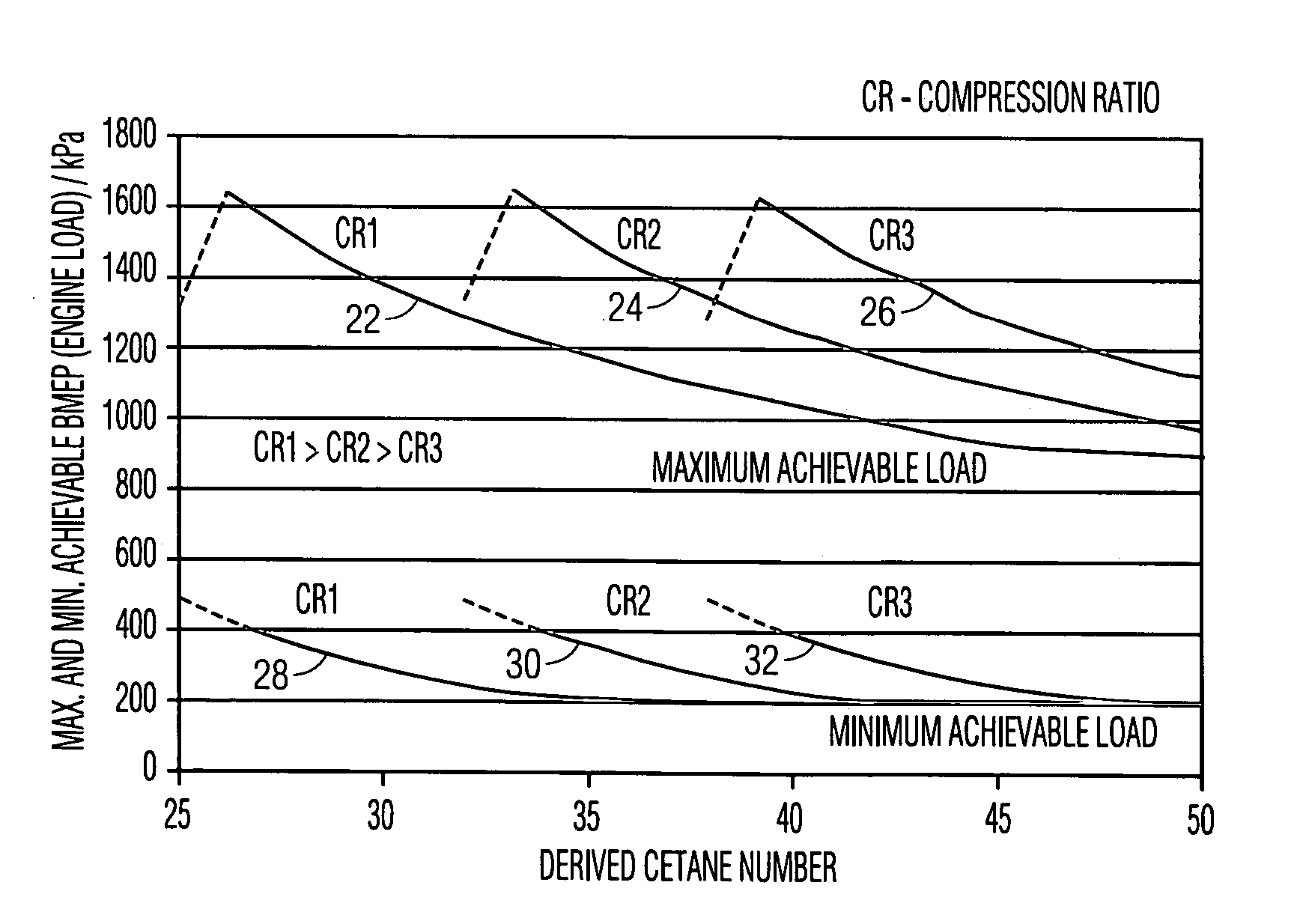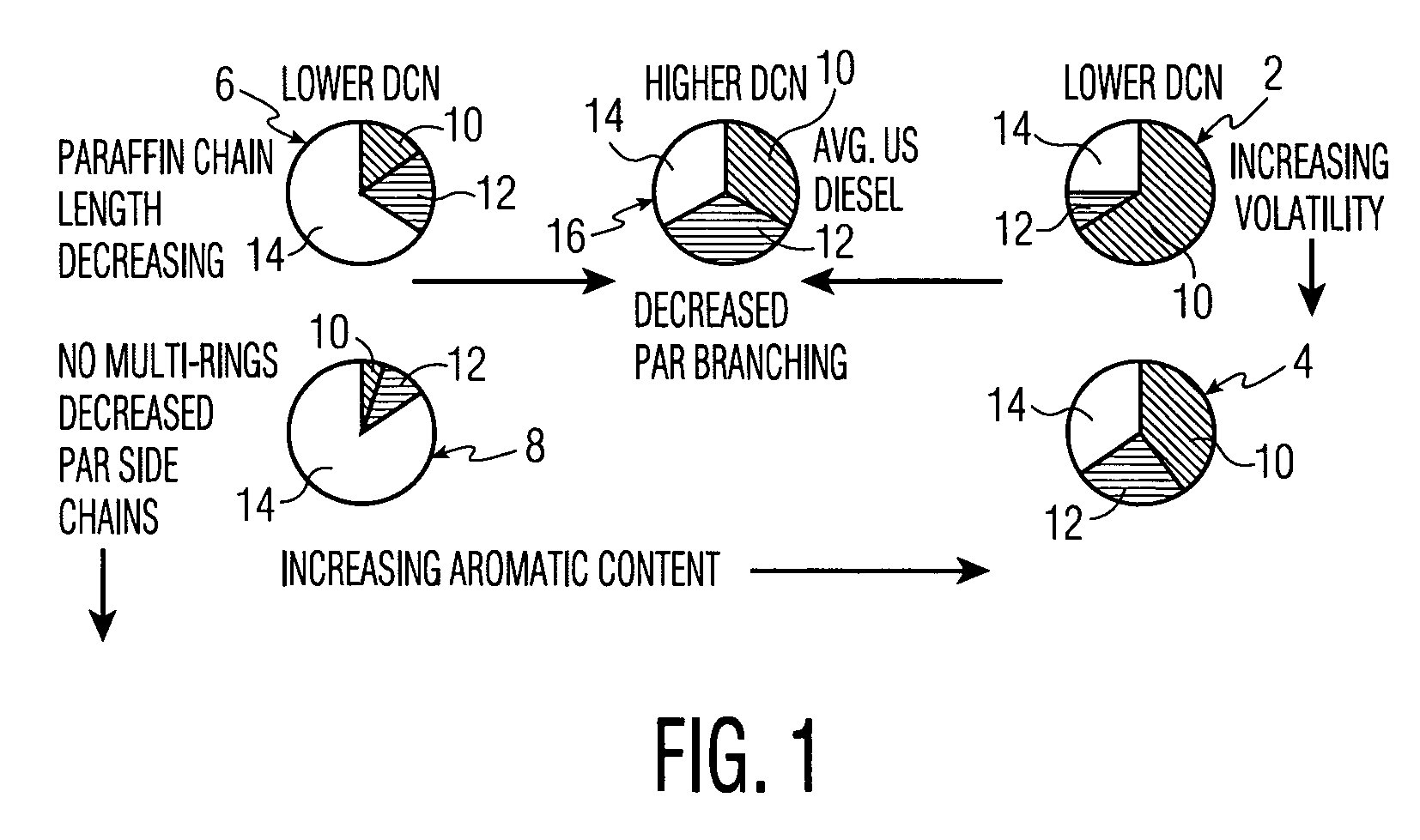Method for selecting fuel to both optimize the operating range and minimize the exhaust emissions of HCCI engines
a technology of internal combustion engine and fuel selection, which is applied in the direction of machines/engines, electric control, instruments, etc., can solve the problems of lack of triggering ignition event, air and fuel are not well mixed, and the combustion is too rapid, so as to maximize the load capacity and load range of the engin
- Summary
- Abstract
- Description
- Claims
- Application Information
AI Technical Summary
Benefits of technology
Problems solved by technology
Method used
Image
Examples
Embodiment Construction
[0027]The use of a single parameter to characterize ignition quality of a wide range of fuels including both gasoline and diesel will benefit fuel suppliers, engine manufacturers, and the end users. Tests conducted by the inventors have demonstrated that liquid, hydrocarbon-based fuels which have the same derived cetane number determined according to ASTM method D6890 exhibit the same autoignition properties in the DI HCCI engine and enable HCCI operation up to the same maximum loads and over the same load ranges irrespective of their boiling range and hydrocarbon makeup. Derived cetane number by ASTM method D6890 is therefore proposed as a universal measure of autoignitability for both gasoline and diesel fuel used in DI HCCI engines. Although DI HCCI is described herein in more detail in relation to the disclosure, it should be understood that other types of HCCI engines (non-direct injection) may be utilized with the present disclosure to achieve similar results. Further, it shou...
PUM
| Property | Measurement | Unit |
|---|---|---|
| cetane number | aaaaa | aaaaa |
| temperature | aaaaa | aaaaa |
| temperature | aaaaa | aaaaa |
Abstract
Description
Claims
Application Information
 Login to View More
Login to View More - R&D
- Intellectual Property
- Life Sciences
- Materials
- Tech Scout
- Unparalleled Data Quality
- Higher Quality Content
- 60% Fewer Hallucinations
Browse by: Latest US Patents, China's latest patents, Technical Efficacy Thesaurus, Application Domain, Technology Topic, Popular Technical Reports.
© 2025 PatSnap. All rights reserved.Legal|Privacy policy|Modern Slavery Act Transparency Statement|Sitemap|About US| Contact US: help@patsnap.com



